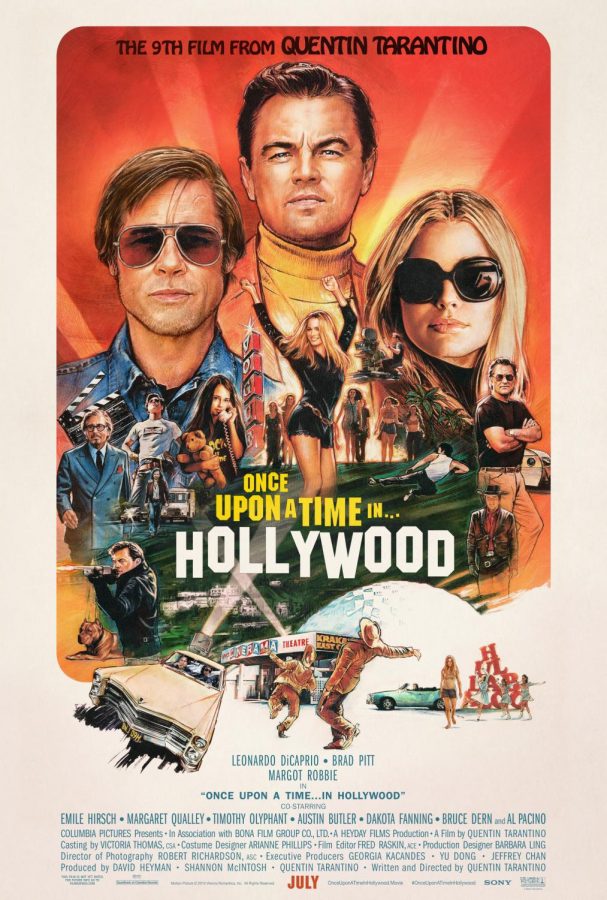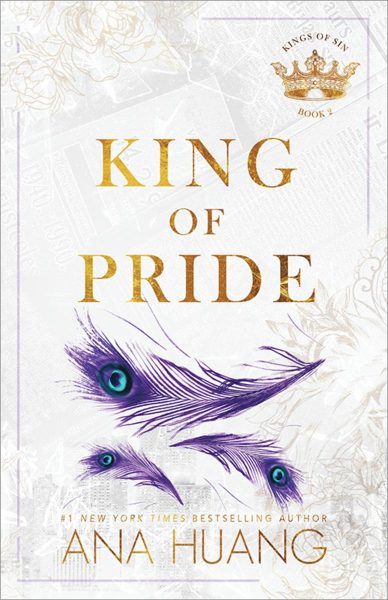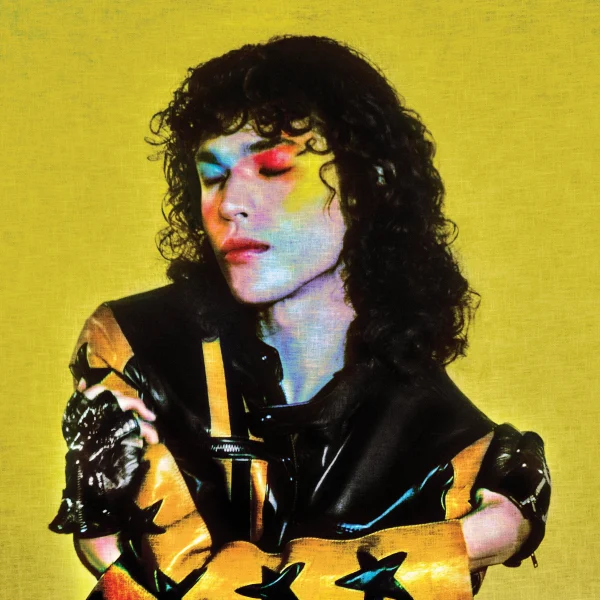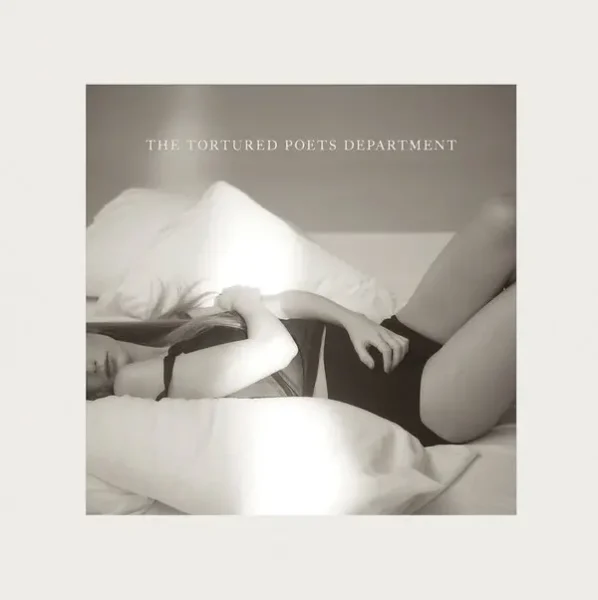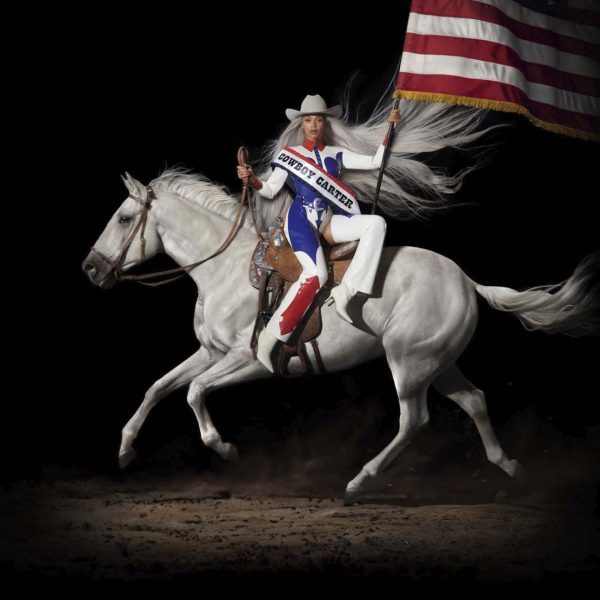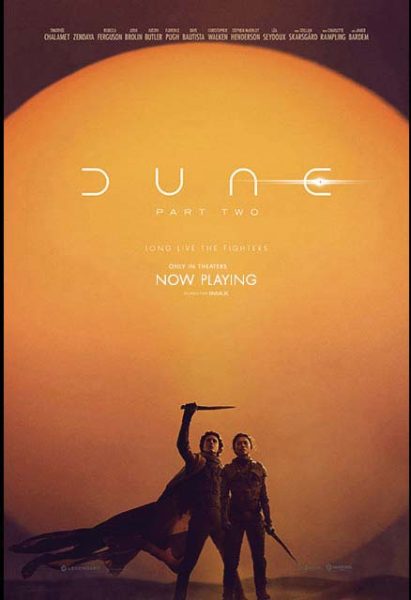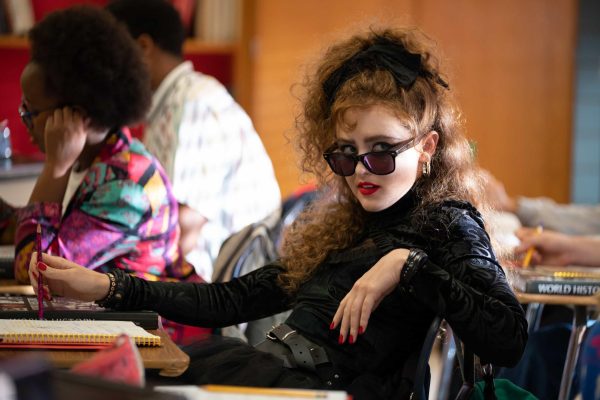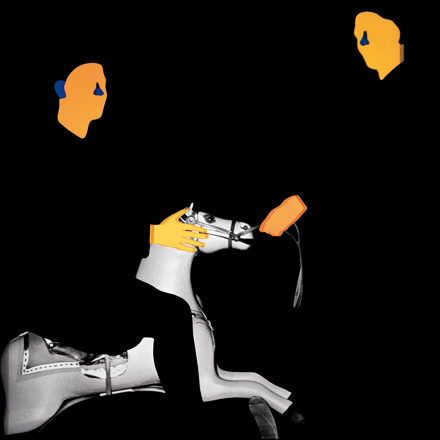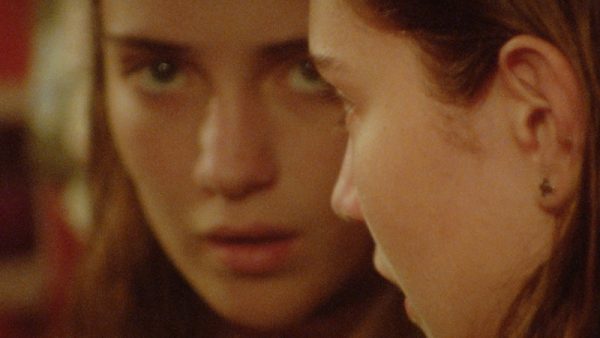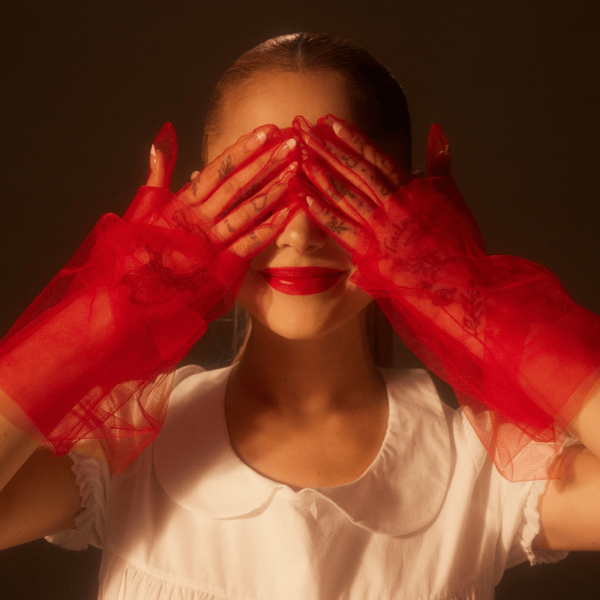Review: “Once Upon a Time…in Hollywood” is a wildly entertaining trip through ’60s Tinseltown
February 2, 2020
In his latest film “Once Upon a Time…in Hollywood”, American filmmaker Quentin Tarantino has captured quite a vibrant time in 1960s Los Angeles with considerable affection for its mythical entertainment industry.
At the heart of its story is fading TV star Rick Dalton, played by Leonardo DiCaprio, and his longtime stunt double Cliff Booth, played by Brad Pitt, who navigate an equally fading city in search of their next big break. Dalton’s contemporaries have successfully moved onto the silver screen, and he knows he also has to make it — in his case a series of spaghetti westerns offered by his casting agent, played by Al Pacino — before he fades away as a has-been. Meanwhile, Booth is his dutiful not-quite-a-servant with a mysterious past. The chemistry between the two is evident, considering their hierarchical differences. DiCaprio is really perfect for the role of Dalton, down to the charisma and all. But, it is Pitt that steals the show, due to the way he speaks volumes even without saying a word.
Running counterpoint to Dalton’s anxieties about keeping his place in Hollywood is his neighbor from Cielo Drive, starlet Sharon Tate, played by Margot Robbie. Living with her husband, Polish director Roman Polanski, played by Rafal Zawierucha, Robbie possesses an angelic quality on screen as Tate, even when speaking only a few words. Taking into account what happened to her in real life, there is a palpable sense of dread whenever she shows up on screen. But, Robbie carries the character really well, which makes us admire and feel for her.
One can’t help but regard “Once Upon a Time…” as a dreamscape, which is apparent from the title aside from its Sergio Leone allusions. The cinematography by Robert Richardson evokes a time and place where movies and actors define it rather than Vietnam and whatnot, in essence creating some kind of utopia. Moreover, perhaps for the first time since “Jackie Brown,” visual spectacles and gags take a backseat in the film, letting the neon-washed scenery of ’60s Los Angeles dominate the story. This indicates that the otherwise playful director who has shaken up the film industry with the likes of “Kill Bill” and “Inglourious Basterds” has wisened up but never mellowed enough to make such a layered and compelling film.
And yet, the only sudden burst of violence occurs in the final act. I feel that history, with its flair for the dramatic, will judge “Once Upon a Time…” by its quite brutal ending. While it certainly threatens to wreck the film apart, there’s no denying its twisted effectiveness in wrapping up storylines that have been running in the background for the past two hours of the film’s runtime. Even though it is certainly a long time to wait, if you are a Tarantino enthusiast, you will be rewarded with quite a spectacle. And with the final frame, a bird’s eye view of the main characters after that fateful night, every average cinephile feels that the innocence of Tarantino’s Tinseltown has now ended, and that reality has now set in.
With all that’s being said, “Once Upon a Time… in Hollywood” reads like cinephile fan fiction, or at least that’s how Tarantino, a movie geek himself, had in mind when making it. It has a high rewatchability value that demands your attention and never lets it go. Tarantino has proven time and again that his work will always fire people up, and “Once Upon a Time…” will be talked about for generations to come, much in the same vein as “Pulp Fiction” and “Django Unchained.”


